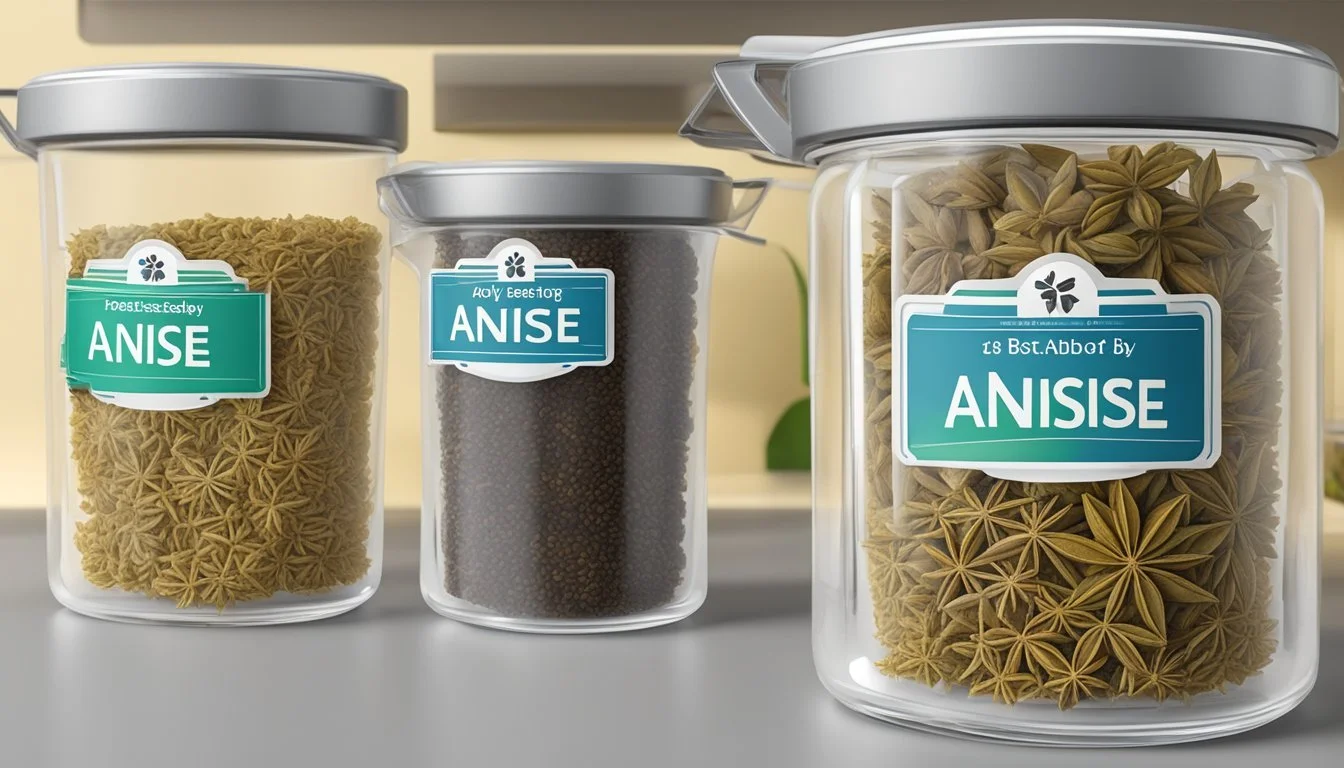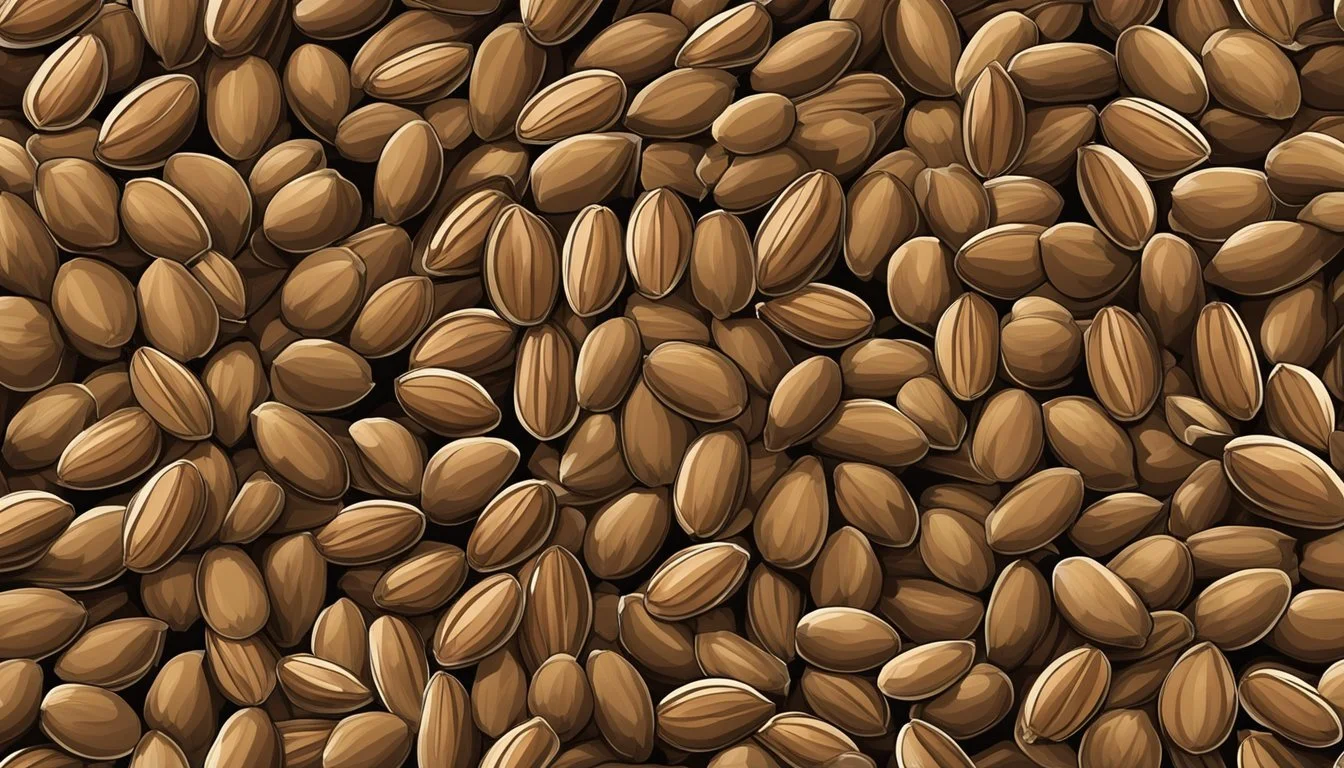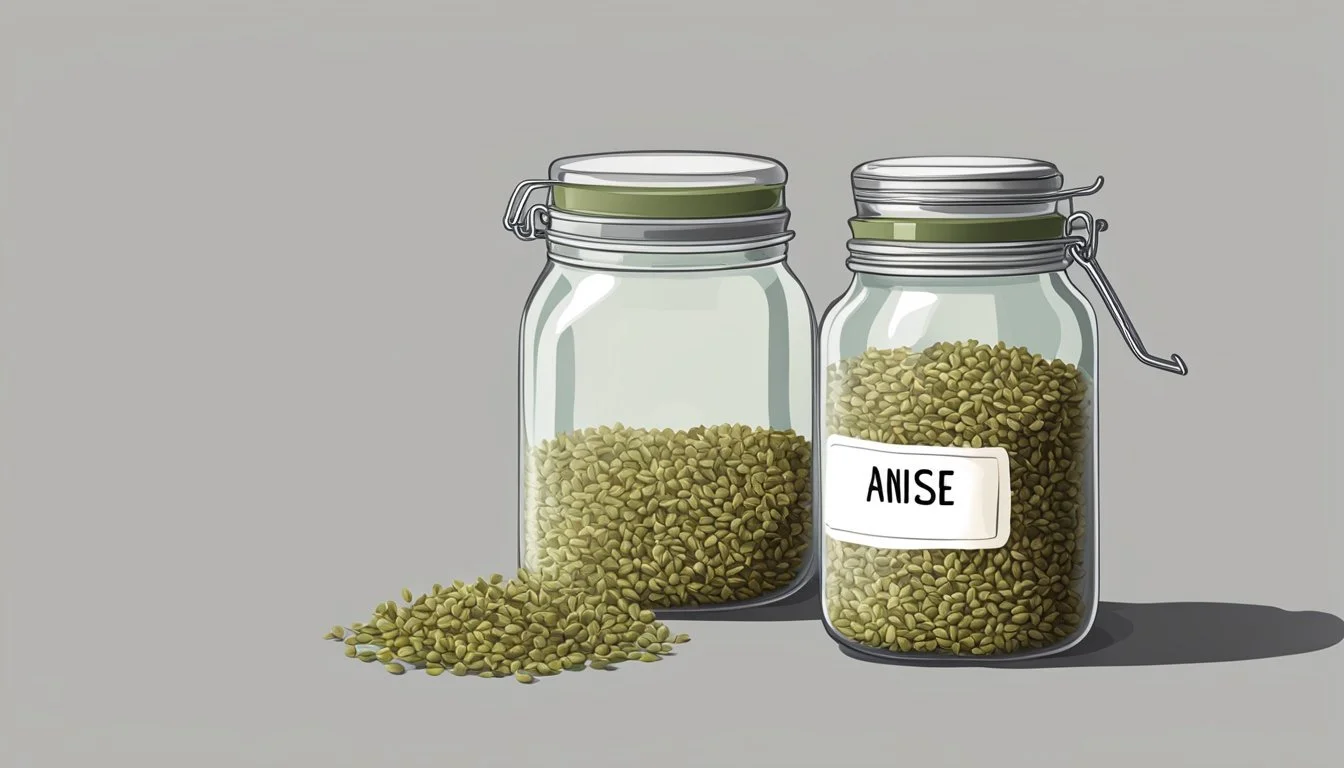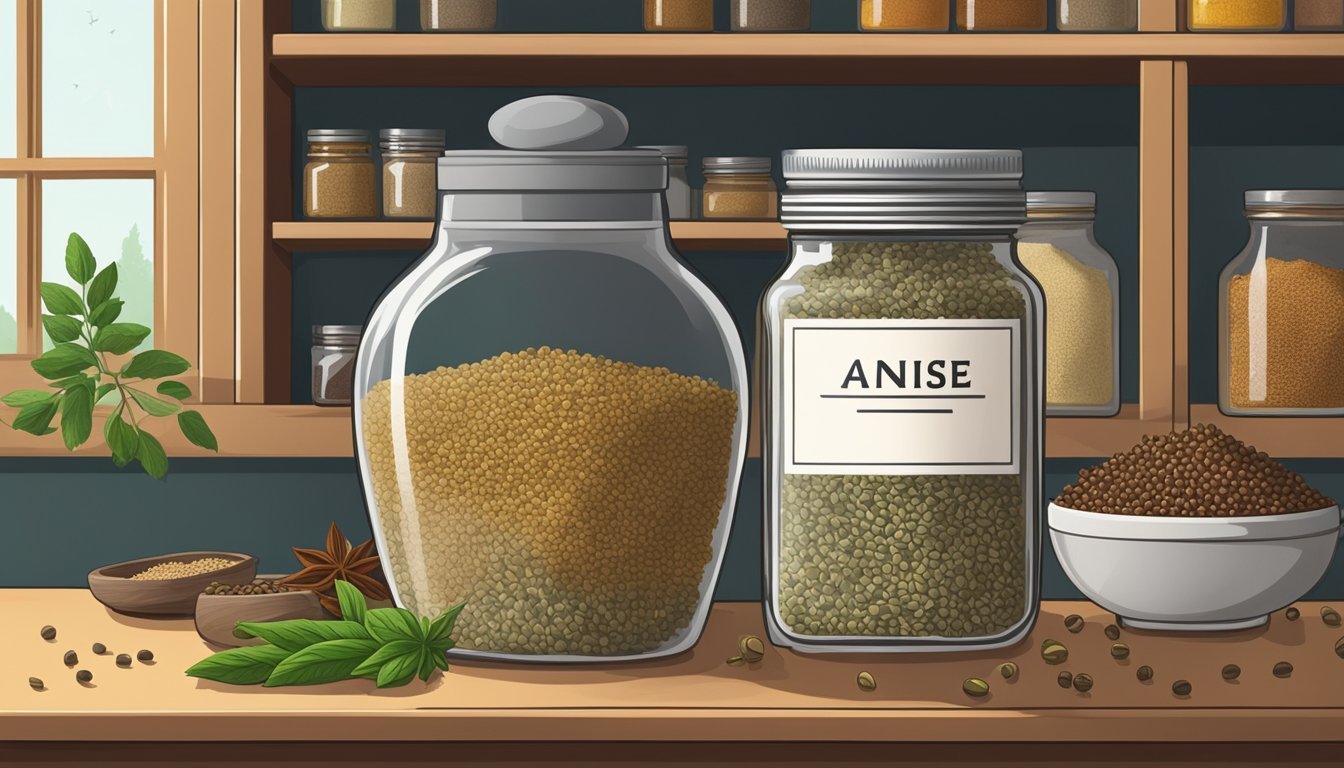How Long Do Anise Seeds Last?
Shelf Life and Storage Tips
Anise seeds (how long do seeds last?) are recognized for their distinctive licorice (how long does licorice last?) flavor and are a staple in various culinary traditions. They are not only prized for their taste but also for their purported digestive and respiratory benefits. Considering their utility in the kitchen and in traditional medicine, understanding the shelf life of anise seeds is quite valuable to both the home cook and the professional chef.
Under ideal conditions, anise seeds can retain their quality for two to three years. The key to maximizing their longevity lies in how they are stored. These seeds should be kept in an airtight container and placed in a cool, dark environment. This method of storage is crucial in preserving their freshness and preventing the seeds from becoming stale or rancid.
However, even with proper storage, anise seeds do lose potency over time. To determine their freshness, one can conduct a simple sensory test. Checking the aroma and flavor of the seeds can help one ascertain their vitality and ensure that the anise seeds are still effective in imparting their characteristic licorice note to dishes.
Anise Seed Characteristics
Anise seeds, derived from the Pimpinella anisum plant, are known for their distinct licorice-like flavor and aroma, making them a favored spice in various cuisines. They possess characteristics that are central to their identity and use in cooking and herbal medicine.
Plant Profile
The anise plant is an annual herb that is part of the carrot family, related to fennel (how long does fennel last?) and Queen Anne’s lace. It requires a specific set of conditions to produce its valued seeds:
Growth Requirements: Full sun exposure and a long growing season, typically around 120 days.
Seed Production: To generate seeds, the anise plant needs ample sunlight.
Plant Origins: Anise originates from the warm climates of Southern Europe.
Aroma and Flavor
Anise seeds are distinct for two main aspects: their aroma and flavor profile:
Flavor: The seeds have a sweet, licorice-like flavor that is both potent and unique.
Oil Content: Anise seeds contain an essential oil that contributes to their strong aroma.
Use in Culinary: Due to their flavor, anise seeds are used to flavor soups, salads, sausages, bread, cookies, and candy.
Cultivation and Harvesting
Successful cultivation and harvesting of anise require an understanding of its ideal growing conditions, proper planting techniques, and attentive harvesting processes. Grasping these fundamentals ensures a bountiful yield of anise seeds.
Growing Conditions
Anise thrives in full sun and prefers a long growing season of at least 120 days. It is best suited to USDA hardiness zones 4-9. The plant demands well-drained soil with a light to moderately rich composition, often a sandy loam, and benefits from a pH that is slightly acidic to neutral. Given that anise forms a taproot, it's critical that the location chosen allows for undisturbed growth.
Planting Anise Seeds
When to plant anise: For regions with a short growing season, start anise seeds indoors 6-8 weeks before the last frost date using biodegradable pots to avoid disturbing the taproot during transplanting. Sow seeds at 70°F for optimal germination. Once the risk of frost has passed and the seedlings are hardy, they can be transplanted to the garden, maintaining a spacing of about 6 inches to allow ample room for growth.
Harvesting Process
Anise plants are ready for harvest when they mature, roughly 130 days after planting. The plant will display umbrella-like clusters of tiny white flowers, signaling the approach of seed maturity. To harvest, cut the flower heads with a section of the stem attached and hang them upside down in a warm, dry, and well-ventilated area. Once the seeds are dry, shake them out gently and store them in a cool, dry place. Regular watering should diminish as the plant matures, allowing the foliage to develop fully and the seeds to set.
Preservation and Shelf Life
The longevity of anise seeds primarily hinges on proper storage methods that shield them from environmental factors that can degrade their quality. Implementing the right preservation techniques can significantly extend their useful life.
Optimal Storage Conditions
To maintain the potency and freshness of anise seeds, they should be kept in a cool and dry place. Factors like direct sunlight, humidity, and heat can hasten the loss of flavor and freshness. It's crucial to keep anise seeds away from any sources of heat and areas with high moisture levels.
Storing Anise Seeds
The best practice for storing anise seeds is to place them in an airtight container to prevent exposure to air and moisture, which can lead to a stale or musty taste. These containers can be glass or plastic with tight-fitting lids. Storing in an area that remains consistently dark, such as a pantry or a cupboard away from appliances or any heat-generating sources ensures the preservation of their color and flavor.
Signs of Degradation
Anise seeds that have degraded tend to exhibit changes in their aroma and color. A loss of flavor or a change in smell from the characteristic licorice scent to a sour or musty odor can indicate that the seeds are past their prime. Moreover, any signs of mold or changes in texture suggest that the seeds should no longer be used. Visual inspection and a quick smell test can serve as reliable measures to assess whether anise seeds are still potent and suitable for use.
Culinary Uses and Benefits
Anise seeds are renowned for their sweet, licorice-like flavor, making them a classic addition to a variety of culinary dishes and offering certain health benefits. This section will explore their role in cooking and their associated health effects.
Anise in Cooking
Anise seeds are often incorporated into recipes to infuse a distinctive sweet and slightly spicy flavor. They can be used whole or ground and are a common ingredient in:
Baked Goods: Anise is frequently used in cookies and bread, adding a nuanced depth to their flavor profile.
Liqueurs: The essence of anise is a key component in various traditional spirits, contributing to their unique taste.
Cooking: The seeds are used in savory dishes, providing contrasts to sour or bland ingredients.
Anise oil, extracted from the seeds, is also utilized for flavoring in baking and in making candies. Additionally, star anise, (how long does star anise last?) although a different plant, shares a similar licorice flavor and is used interchangeably in cooking.
Health Effects
The use of anise seeds in tea is known for its potential health advantages. They may aid in:
Digestive Health: Anise tea is frequently consumed after meals to promote digestion.
Respiratory Relief: Some suggest anise seed tea can help alleviate congestion and mild respiratory issues.
While anise does offer health benefits, it should be consumed in moderation, as excessive consumption can have adverse effects. It is important to note that further scientific research is necessary to conclusively determine all of the health impacts of anise seeds.
Common Issues
When storing anise seeds, it is crucial to manage factors such as humidity, temperature, and the presence of pests to maintain their potency and prevent spoilage. This section identifies common issues encountered and how to address them effectively.
Pest and Disease Control
Anise seeds may fall victim to a variety of pests such as aphids, which can cause damage to both seeds and leaves. To control these pests, one can introduce beneficial insects, like ladybugs, or apply insecticidal soap in accordance with manufacturer instructions. Diseases such as fungal infections can also be problematic, and the use of systemic fungicides might be warranted, adhering strictly to the label's guidelines to prevent further spread. It's important to harvest seeds promptly to minimize exposure to such issues.
Troubleshooting Heavy Climates
Anise seeds are sensitive to climates with high humidity and heavy rainfall, which can complicate both growing and storage conditions. Seeds might not dry properly after harvesting, leading to mold or decay. When watering anise plants, ensure the water is delivered to the base to keep leaves dry and reduce disease risk. In climates with extreme heat, anise requires protection to maintain a consistent temperature. Likewise, in preparations for winter or in the event of an unexpected frost, providing suitable covering can safeguard the plants, as sudden drops in temperature may cause damage.
Additional Information
In exploring the multifaceted nature of anise seeds, their cultural significance and comparison to other herbs provide a deeper understanding of their use and preservation.
Anise in Different Cultures
Anise plays a significant role in various cultural cuisines, serving distinct purposes that range from flavoring dishes to medicinal uses. In Middle Eastern cooking, anise seeds are often incorporated into bread and desserts for their potent licorice flavor. The plant itself, recognized by its white flowers, can grow to an average height of three feet and is valued by gardeners not only for culinary uses but also for its aesthetically pleasing appearance. In terms of health, anise has been traditionally used to soothe coughs due to its expectorant properties.
Medicinal Uses:
Soothes coughs
Contains expectorant properties
Culinary Uses:
Salads: Provide a sweet, licorice-like flavor
Garnish: Fragrant addition to dishes
Comparison to Other Herbs
Anise seeds are often confused with other herbs such as coriander, star anise, and fennel, each having its unique flavor profile and culinary applications. While all three can be used for similar purposes, such as in the preparation of aromatic dishes, they stem from different plants.
Herb Flavor Note Botanical Family Anise Sweet, licorice-like Apiaceae (parsley family) Coriander Citrusy, nutty Apiaceae Star Anise Stronger licorice Illiciaceae Fennel Aniseed, earthy Apiaceae
Propagation of anise is similar to that of its relatives, benefiting from a sunny environment and often adopting similar cultivation techniques used for related species. As a result, anise has made its place both in the gardener's landscape and the chef's palette.







